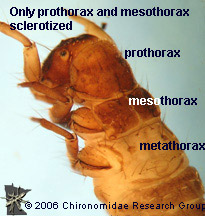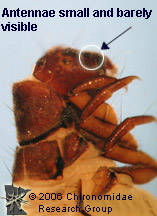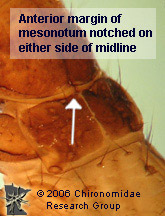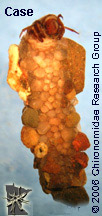Uenoid Case-maker Caddisflies
These photos supplement pages 119-135 of the Guide to Aquatic Invertebrates of the Upper Midwest. Information on the biology of Uenoidae can be found on page 135. Uenoidae have a sclerotized pronotum and mesonotum and a membranous metanotum (there are some small plates present). Their antennae are so small they are barely visible and their metatarsal claws are longer than the claws on the other legs. Their main identifying character is that their abdominal segment 1 has a hump, and the anterior margin of their mesonotum is notched on either side of the midline. Unenoid caddisfly larvae build cases of sand or stone pieces with several larger stones attached to the sides of the case. These cases can look similar to other caddisfly families, so the cases are not diagnostic.




